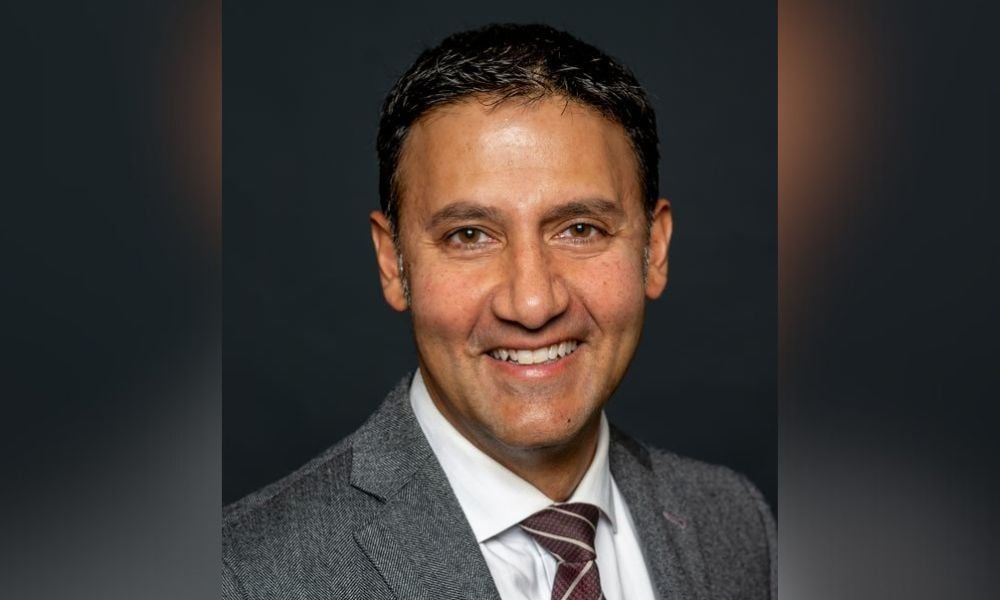The death knell of the billable hour still rings loudly, yet use of the traditional billing method persistently resonates in law practices across the country, Canadian Lawyer’s 2019 Legal Fees Survey reveals.

The death knell of the billable hour still rings loudly, yet use of the traditional billing method persistently resonates in law practices across the country, Canadian Lawyer’s 2019 Legal Fees Survey reveals.
The results of the survey strike an optimistic tone among lawyers and firms, none of whom anticipate a fee reduction, with nearly half expecting to introduce an increase in 2019.
Most lawyers, by far, 88.56 per cent, continue to use the billable hour, although 62.71 per cent use flat rates and 33.56 per cent rely upon contingency fees, this year’s survey has found. That’s consistent with previous years. In the 2018 survey, 87 per cent of respondents indicated they still charged clients through an hourly rate, while 71 per cent indicated they charged flat fees. And in 2017, 87 per cent participating in the survey indicated that the billable hour still ruled.
Although Crease Harman LLP in Victoria does employ a mix of billing arrangements with clients, the full-service law firm with 13 lawyers — which covers much of Vancouver Island — relies largely on the billable hour for both internal and external reasons, says managing partner Bruce Hallsor.
Click here for a full pdf of the survey.
“We’re a pretty traditional firm; we go by the billable hour. For certain types of solicitors’ work, there tends to be flat fees for wills or conveyances. . . . But for the most part, we stuck with the hourly rate. We found that, internally, it’s a very good way of managing lawyer productivity, and we haven’t had a lot of pushback from clients on it,” he says. “Even when we do a different arrangement, we like to keep track, internally, of the hours put in on a file. We find it’s a good management tool and it’s fair.”
Hallsor sees it as a powerful way to manage a law firm and gauge the productivity of lawyers and help identify areas that are not as productive. Crease Harman will break down the rate, hours and how they are allocated when billing the client to provide a transparent process, although that might result in questions from clients.
This year’s online survey was conducted from Jan. 4 to 28 and included 336 responses.

Of the respondents, 51.69 per cent indicated they worked in firms with four or fewer lawyers, 29.39 per cent in firms with five to 25 lawyers and 8.11 per cent worked with 26 to 50 lawyers. The largest group, 49.66 per cent, were from Ontario, followed by 17 per cent in both Alberta and British Columbia, four per cent in Manitoba, 2.7 per cent in Nova Scotia, 4.73 per cent in Saskatchewan and fewer than two per cent were from New Brunswick, Newfoundland and Quebec.
A combination of flat fees (62.87 per cent) and an hourly rate (88.61 per cent) are the most common means used to charge clients for firms of all sizes, although blended hourly rates are used by 34.38 per cent of firms with more than 26 lawyers.
Small firms with fewer than four lawyers indicated their use of non-hourly billings or alternative fee arrangements are largely — 80 per cent — proactive, while 65.91 per cent of firms with five to 25 lawyers indicated that it was proactive. But the numbers were flipped for firms with 26 or more lawyers, with 70 per cent indicating the move was reactive.
Certainly, clients are seeking increased value and look to lawyers and firms to find new avenues for delivering legal services, says Julia Valladao, division director at Robert Half Legal in Toronto, which offers legal staffing services. Clients seek cost predictability, which drives widespread adoption of non-traditional payment options, such as flat fees, contingency fees and subscription to ongoing services.
 She believes that the traditional hourly billing approach is being replaced by alternative fee arrangements, which may also include outcome-based performance bonuses, particularly for existing clients. Flat fees negotiated to provide predictable pricing and working within a client’s budget might also be arranged with hourly billing.
She believes that the traditional hourly billing approach is being replaced by alternative fee arrangements, which may also include outcome-based performance bonuses, particularly for existing clients. Flat fees negotiated to provide predictable pricing and working within a client’s budget might also be arranged with hourly billing.
“Law firms are trying to demonstrate the value that they provide to the clients and offer more flexible rates and innovative services to remain competitive. So, the smaller, mid-sized boutique law firms that can offer clients a lower bill rate are in a unique position to capture new business,” she says. “It’s rather critical for the competing firms to sort of streamline and enhance their own service offerings and the approaches they’re offering to their clients . . . creating ways of being competitive as well.”
For Raymond Wagner’s personal injury practice at Wagners, focusing on class actions, contingency fees are the natural go-to. Just the same, the Halifax lawyer has long called for the demise of the billable hour. He says it can prolong litigation through unnecessary motions and requests for additional disclosure and discoveries.
“My argument always is . . . that the hourly rate should be dumped and you should really go to more of a contract billing model, similar to contingency fee arrangements, where success is measured in the time to achieve a result and the efficiency and the outcome all looked at as opposed to how much time you spent on a case,” he says.
In her Moncton, N.B. practice, Jo-Anne Moore has seen both a gradual decrease in the number of family law clients opting for litigation and an increase in the number of self-represented litigants, which has become a concern nationwide. As a result, she works hard to find solutions for her clients at Jo-Anne Moore Law Office and Mediation Services to help keep them out of the courtroom, including mediation and setting flat rates for predictable work.

“There are some situations, for example, with a first motion in a family matter, I do ask for a flat fee . . . and I didn’t do that before,” she says. She has also introduced unbundled services, helping self-represented litigants with the process, filing forms and coaching them for court appearances, for which she charges an hourly fee.
Moore says she tries to keep her fee reasonable, explaining at the beginning what is involved, how a retainer works and what the client might expect, and she tries to bill regularly, itemizing all the costs, so clients aren’t caught off guard. She also found that giving discounts isn’t a good business practice and has stopped doing that altogether. “In my [10-year] career, I’ve written off two bills. . . . I still bitterly complain about that, but it’s not bad, all things considered.”
Self-represented litigants, who don’t have a lawyer helping them navigate through the process, are having an impact upon those who do, says Richard Gabruch of Gabruch Legal Group, which is a general practice with three lawyers in Saskatoon, Sask.
“If we’re on a list and there are three or four self-represented matters before us, all of a sudden, we’re spending double or triple the time just waiting in court just to be heard. As a result, it’s not directly related to our hourly rate, but the amount of time that we’re spending there has increased substantially,” he says.
So, while family law and real estate law, which have been impacted by a slow market, are not seeing fee increases this year or last, civil litigation has been steady, resulting in a small increase in 2018, says Gabruch.
In setting flat fees or hourly rates, most firms with fewer than four lawyers — 76.81 per cent — indicated they compared their fees to that of other lawyers in the same practice area. That was consistent with the larger firms, indicating an overall average over all-sized firms of 80.35 per cent; although 56.77 per cent of respondents of all-sized firms indicated that the fees and rates are based on changes in firm costs and/or inflation.
The result is that none expect to drop their fees this year and an almost equal number of respondents in all firm sizes indicated they would keep the charges the same — 47.64 per cent — in 2019 as they were in 2018 or raise them — 44.64 per cent. This is the second consecutive year in which there will be no reductions. In 2017, 2016 and 2015, 0.6 per cent, three per cent and two per cent, respectively, had anticipated cuts.
Among all firm sizes, 40.78 per cent anticipated increases to be less than five per cent, while 45.63 per cent anticipated the range to be between six and 10 per cent. Another 9.71 per cent indicated the increase would be between 10 and 20 per cent.
Higher overhead costs (50.49 per cent), increased complexity (40.78 per cent) and inflation (62.14 per cent) were cited in the survey as reasons for increases in law firm billing rates this year.
Leanne Rapley does expect this is the year she will be increasing the rates at Rapley & Company Lawyers and Mediators after leaving them the same for the past several years, citing inflationary-related reasons such as increased costs.
Seven years ago, she moved the litigation and mixed commercial practice, now with four lawyers, from Toronto’s Bay Street to a house in the Beaches area and passed the savings in costs from the move to the clients. At the same time, technology and artificial intelligence, used to produce legal products used at her firm, has helped to reduce labour time and related costs.
But after several years of no increases, the firm’s rates will go up in 2019, likely in the zero-to-five-per-cent range, largely because of increasing overall costs, although complexity is also a consideration.
“On the construction side, there’s been a lot of controversy about the new construction lien legislation and also the prompt payment legislation coming in,” which impacts the construction practice area, she says. “I think that it does add a layer of expertise to what is required of us.”










